Scottish Studies events
Previous events
The Art of Citizenship
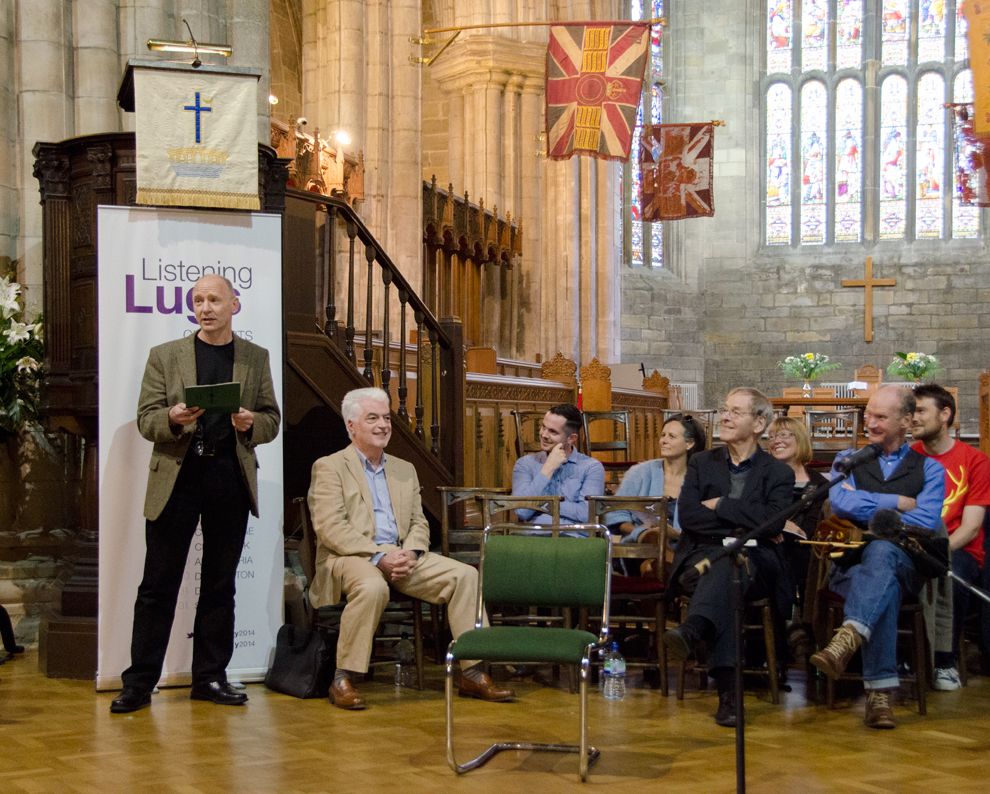
Conference: 18 April 2015
This one-day conference was hosted by the Scottish Political Archive to discuss the 2014 Bus Party Listening Lugs tour. This used the arts as a catalyst for civic conversation on the sort of society we want. In the run-up to the 2014 referendum a group of writers, musicians and visual artists visited community centres, bookshops, churches and public libraries from Stromness to Stirling. Performances by the artists on the bus (led by writer Neal Ascherson and including James Robertson, Karine Polwart, Mairi Campbell, Billy Kay and David Greig) opened a space for conversation on the kind of Scotland local people wanted. Their local visions of Scotland were captured on a scroll and a film of the journey, made by visual artists Andy Sim and Carolyn Scott.
The Art of Citizenship conference was an opportunity to see the film and meet some of the artists on the bus reflecting on their tour and the continuing role of the arts in fostering active citizenship and participatory democracy in Scotland. Guest commentators included Professor Tom Nairn, who was interviewed on the development of his own political thought by Professor Will Storrar (Princeton) and Stirling’s Dr Scott Hames.
The Scottish Political Archive [www.scottishpoliticalarchive.org.uk] now holds the archive of the 1997 and 2014 Bus Party including the Scroll of Hopes.
Narrating Scottish Devolution
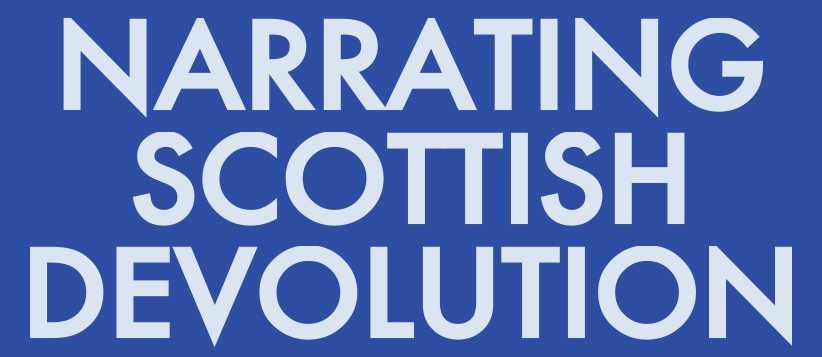
Workshops: August 2014, 2015
Narrating Scottish Devolution explored the different ways in which devolution has been explained, understood and made culturally meaningful in Scotland. Two inter-disciplinary research workshops, held in August 2014 and August 2015, considered the idea of ‘cultural devolution’ and its influence in post-1999 governance and literary culture. Participants ranged from literary critics to constitutional experts, and from poets to parliamentarians.
The main project [https://narratingdevolution.wordpress.com] was funded by the British Academy; the Centre for Scottish Studies supported the development of a podcast[http://www.theguardian.com/uk-news/scotland-blog/2016/feb/26/nobodys-dream-stories-of-scottish-devolution] based on workshop recordings and interviews. That podcast (‘Nobody’s Dream: The Stories of Scottish Devolution’) was featured on the Guardian’s Scotland blog in February 2016, and is also archived [https://stirlingcentrescottishstudies.wordpress.com/2016/02/26/nobodys-dream-stories-of-scottish-devolution/] by the Centre for Scottish Studies.
Capturing the Indyref - Scottish Political Archive
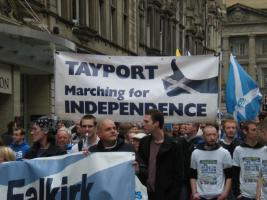
Beginning in 2012, the Scottish Political Archive developed a 2014 Independence Referendum Collection to complement existing material held in the archive relating to the 1979 and 1997 devolution referendums. Funding from the Centre for Scottish Studies allowed student interns to participate in the creation of this new archive collection: attending campaign events, taking photographs and collecting campaign materials produced by the individual groups and political parties to record the grassroots referendum campaign throughout Scotland.
Archive intern Rebecca said of her experience of volunteering for the archive throughout the referendum campaign: While working with the archive on their referendum collection I have been given the opportunity to benefit from some of the most vibrant political debate in Britain, enhancing my understanding of the political landscape in Scotland and allowing me to make contacts and attend events I would otherwise have never been able to attend.
The 2014 Independence Referendum Collection now numbers over 2,000 images and includes leaflets, badges, banners and assorted ephemeral material. This collection will be stored permanently as part of the Scottish Political Archive made available physically at the University of Stirling and virtually as a digital resource online. The Independence Referendum Collection is available online through our Flickr site.
Worldwide Medieval Network in Stirling
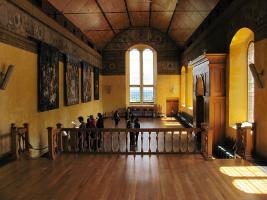
Conference : 12-14 September 2014
Stirling was pleased to host the 2014 annual conference of CARMEN, the Worldwide Medieval Network. Some 54 delegates from across Europe, North and South America, and Australia attended a hugely successful meeting that included six formal presentations, a round table discussion, two open forums, and three workshops for prospective co-operative projects. The theme of “Heritage” loosely connected all sessions (tying in well with the surrounding debate about Scotland’s constitutional future), and highlights included a session on the uses and abuses of history in the renovation of Stirling Castle. Feedback on the event was hugely positive.
If Scotland: Posting 2014
Conference : 23-24 August 2014
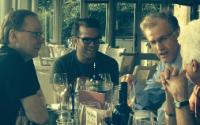
This two-day conference imagined how the referendum debate of 2014 might be remembered a few decades later. Over 100 registered delegates heard a wide range of papers and lectures from literary scholars, cultural historians and political commentators. Delegates took in events imagining post-Yes and post-No futures (and future memories looking back on 2014) involving writers, journalists and political scientists. There was even a piece of original youth theatre on the conference theme involving BBC Scotland’s youth project ‘Generation 2014’. Papers from the conference will be published in an upcoming issue of the Journal of Scottish Thought, edited by Scott Hames and Adrian Hunter. View photos and videos from the conference here.
The Battle of Bannockburn: 700th Anniversary

Conference : 25-26 June 2014
This event brought together scholars working on the military, archaeological, environmental, literary and heritage history of the battle and attracted a wide audience of scholars, students, heritage practitioners and interested members of the public. Some 60 delegates attended a dozen papers exploring such issues as military warfare, the site and environment of the battle, its cultural and political legacy, and its recent heritage representation. The proceedings are set to be published with colour plates in 2015 through Shaun Tyas with support from the Strathmartine Trust and the University of Stirling History lectures for teachers. View the call for papers here.
The Strange Case of Dr Jekyll, Mr Hogg and the Reverend Gideon Mack
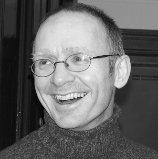
Lecture : 20th November 2013
The annual Hugh McNaughtan lecture, sponsored by the James Hogg Society, was delivered by the celebrated Scottish writer James Robertson. This innovative ‘performed essay’ examined themes of doubleness in Scottish fiction and attracted a large audience of Stirling undergraduates and Hogg enthusiasts.
Prelates, nobles and patricians:
the composition of representative institutions
Conference : 29 August 2013

This was the second workshop conference of the European network‘Political representation: communities, ideas and institutions in Europe (c.1200-c.1700)’.
The first, foundational workshop, held at The Hague, considered the origins of representation and the divergent institutional developments of representative institutions, and placed these in comparative view in a range of European settings. At Stirling attention turned to the members themselves – the deputies, commissioners, senators and lords of parliament who gathered by right, by selection or election. Individually and severally, these figures are the focus of a group of parliamentary experts from Scotland, England, Ireland, Holland, Belgium and Germany
covering a lengthy historical timeline from c.1300 to c.1700.
Plantations Amidst Savagery?
Conference : 9-12 July 2013
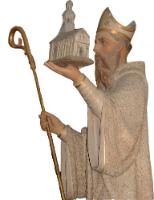
In 1113 David, youngest son of St Margaret of Scotland, founded a colony from abbey of Thiron-Gardais
at Selkirk in the Scottish Borders. This community was the first of any of the reformed Benedictine or Augustinian monastic orders to be founded in the British Isles. The arrival of these continental monks heralded an era of profound religious, political, cultural, social and economic transformation in the lands along the northern rim of Christendom from Scotland and Ireland in the west, through England, Scandinavia and north Germany, to Poland and Estonia in the east.
To celebrate the 900th anniversary of this event, the University of Stirling, supported by Historic Scotland, hosted a multi-disciplinary conference bringing together scholars from across Europe and North America to explore the monastic impact on the culture and society of northern Europe from the 12th to 16th centuries and its modern legacies.
Visual Cultures in Scotland and Argentina
Symposium: 25 April 2013
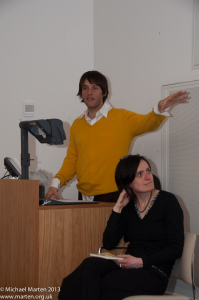
This seminar brought together artists, academics and interested others from Argentina and Scotland in an exchange around contemporary developments in visual culture. Our focus was the relationship of visual art to local communities and broader cultural institutions at a time of uncertainty, debate and change in both countries. Presentations by Syd Krochmalny (a sociologist and artist based in Argentina) and Simon Yuill (an artist and writer based in Scotland) were followed by an informal discussion.
Women and Film in Scotland
Symposium: 8 February 2013
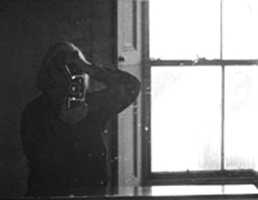
Hosted by the Glasgow Short Film Festival, this symposium on Female Authorship provedto be one of the most popular events. The day opened with a keynote lecture from Professor Sue Thornham, who then chaired a panel on the role of feminism in film education, curation and production. Panellists included Stirling’s Professor Karen Boyle, Dr Belen Vidal, Laura Hudson, Louise Crawford and Dr Lucy Reynolds.
In the afternoon, Dr Sarah Neely of Stirling chaired a panel on women filmmakers in Scotland. The panellists included Denise Mina (writer), Claire Mundell (producer), Andrea Gibb (screenwriter), Helen Fitzgerald (writer), and Eleanor Yule (screenwriter/director/PhD student). The day concluded with a screening revisiting a number of filmmakers whose work was represented in the International Film Festival and Conference ‘Her Take’, held in Glasgow in 1990 as part of the Year of Culture.
Monumentality: Monuments and Commemoration in Later Medieval and Early Modern Europe
August 2011
In August 2011 the Centre supported a conference on Monumentality: Monuments and Commemoration in Later Medieval and Early Modern Europe.
While monumental tombs and religious acts of commemoration in pre-Reformation Scotland have remained remarkably neglected fields of study since the rudimentary antiquarian catalogue of effigies published in 1895 by Robert Brydell, F.S.A., scholars elsewhere in Britain and Europe have advanced the investigation of these themes considerably. There is thus great scope for an inter-disciplinary forum to showcase both the development of tombs and other forms of commemoration on a pan-European scale, c.1000-c.1650, and also to focus a variety of comparative and specialist approaches on these key cultural phenomena in a Scottish medieval context
Fifth Biennial Conference on Robert Louis Stevenson
July 2010
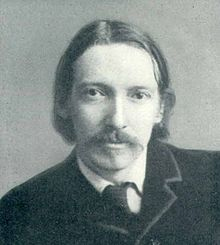
In July 2010, Stirling hosted the fifth biennial Conference on Robert Louis Stevenson, ‘Locating Stevenson’.You may go all over the States, and … you shall scarce meet with so marked a difference of accent as in the forty miles between Edinburgh and Glasgow … local custom and prejudice, even local religion and local law, linger on into the latter end of the nineteenth century – imperia in imperio, foreign things at home.
RLS, ‘The Foreigner at Home’
‘Locating Stevenson’ is concerned with orientating, rather than merely positioning, Stevenson’s work within the fields of literary genre, period, movement and genealogy, and within debates about our nation, tradition, place and identity. This shift from the map to the compass seems suited to the mobility of Stevenson’s own writing and life.
Buildings, Landscape and Environment
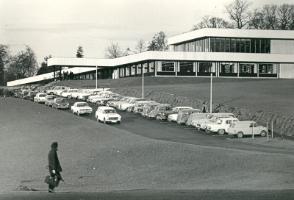
2007
In 2007, the Centre contributed to the University’s 40th anniversary celebrations through the conference Buildings, Landscape and Environment. This event examined the planning, construction and development of the University of Stirling, bringing together a group of speakers which included architects involved in the planning and design of the new university in the 1960s, university staff and architectural historians.
The Lie of the Land: Scottish Landscape and Culture

2006
In 2006 a major cross-disciplinary conference was held on The Lie of the Land: Scottish Landscape and Culture to explore the representation and interpretation of landscape in Scottish cultural production. While many of the papers were on literature and the visual arts, speakers also include historians, art historians, representatives from environmental agencies, as well as ethnologists, archaeologists and researchers from Stirling's own
AHRC Centre for Environmental History.
Journal of Stevenson Studies
2004
In July 2004 the Centre launched the Journal of Stevenson Studies a refereed journal published from Stirling with an editorial board of internationally distinguished Stevenson scholars. The first of what was to become a biennial series of Stevenson conferences was held in Stirling in 2000.
Archive
- In 2002 CSS supported a conference, The Thistle and the Rose: the Anglo-Scottish Treaty of Perpetual Peace of 1502, with part of the proceedings published in The Forth Naturalist and Historian (2003).
- In 2002 and 2003 a series of five seminars and then a conference were held on Reputations in Scottish History, exploring the mechanisms by which yesterday's heroes and heroines have come to be remembered, or indeed forgotten today: the proceedings of these events were published in Études Eçossaises, 10 (2005), edited by L. Gourievides, M. Penman and J. Smyth.
- In 2006, in conjunction with the Scottish National Portrait Gallery, the Project team also commissioned a MORE poll of Scottish public opinion about Scottish historical figures: this contributed to a SNPG exhibition, ‘Great Scot!’ [Spring 2006].
- In November 2000, a symposium was held on Celtic Modernism: J.D. Fergusson and the Writers, in which ten distinguished scholars explored the concept of 'Celtic modernism' and the influence of Bergsonian theory in the work of the painter J.D. Fergusson and contemporary writers and thinkers in Scotland England, Europe and further afield.
